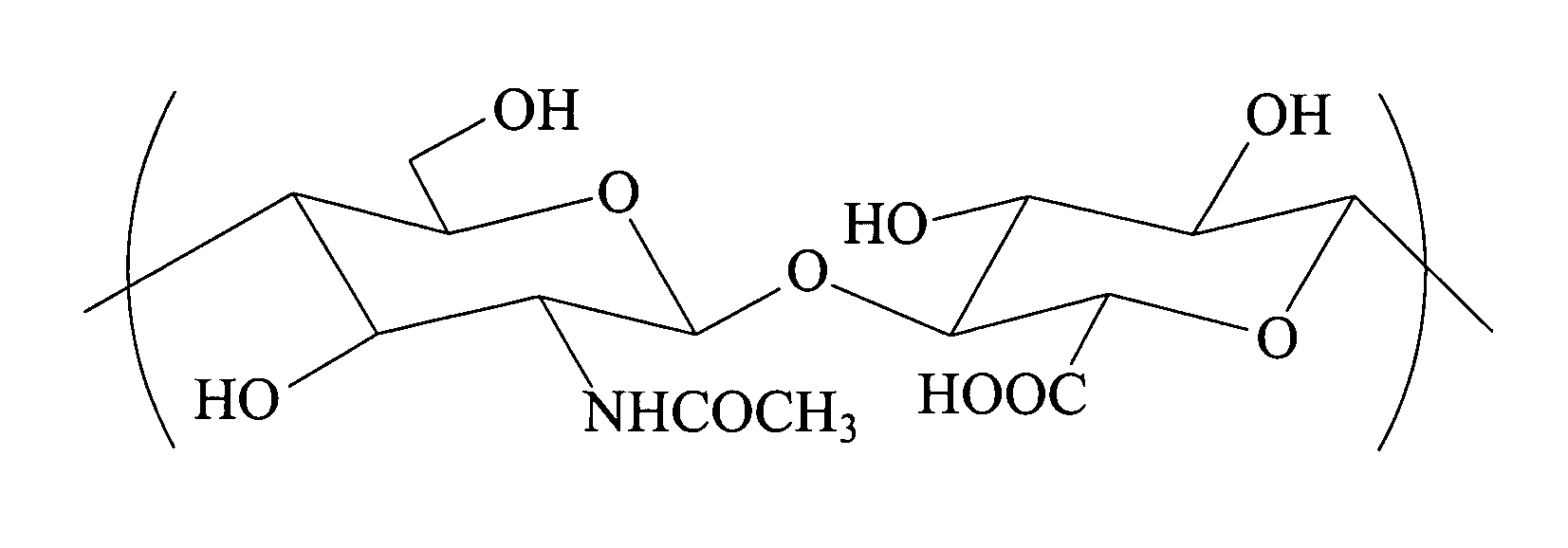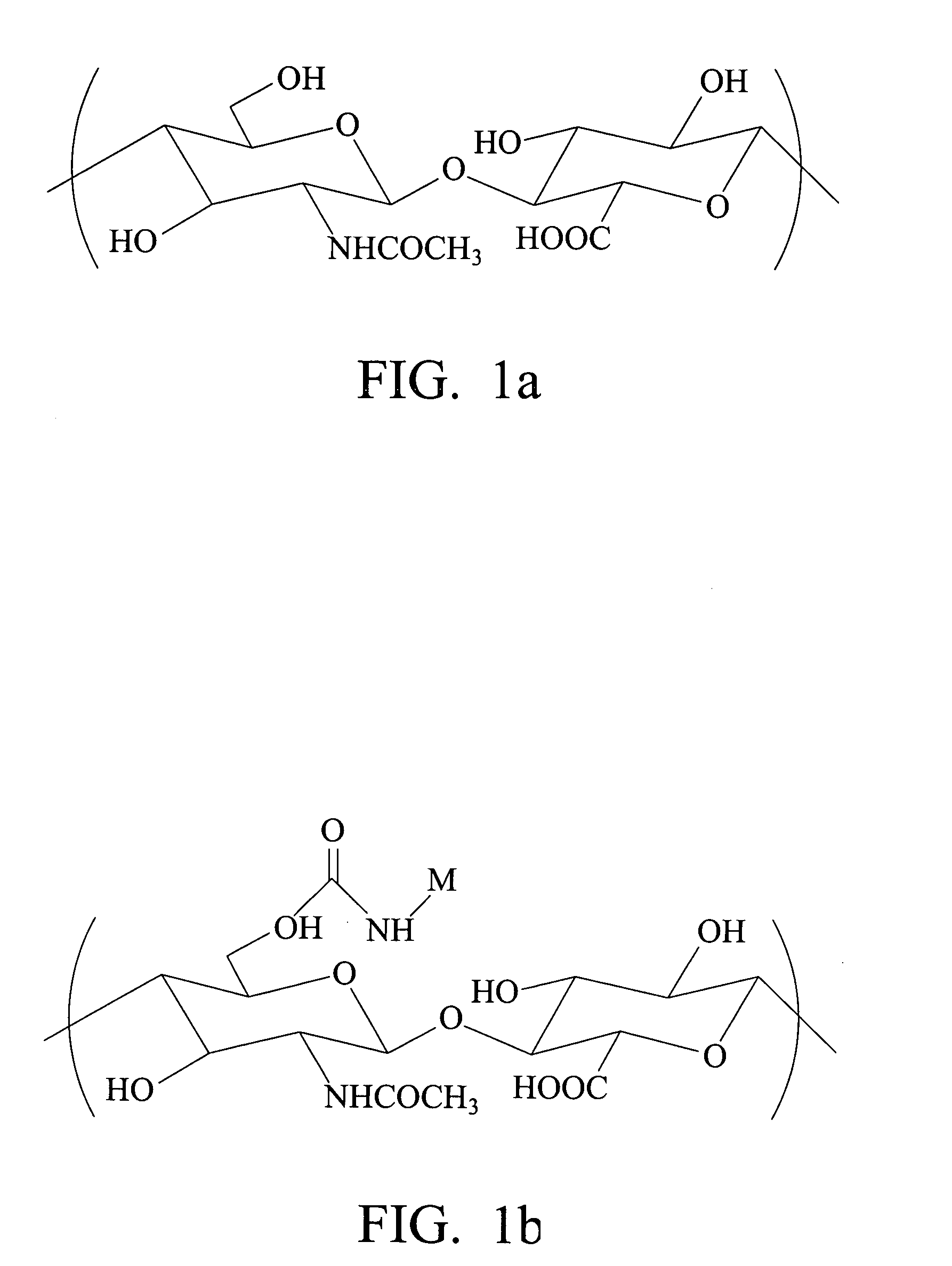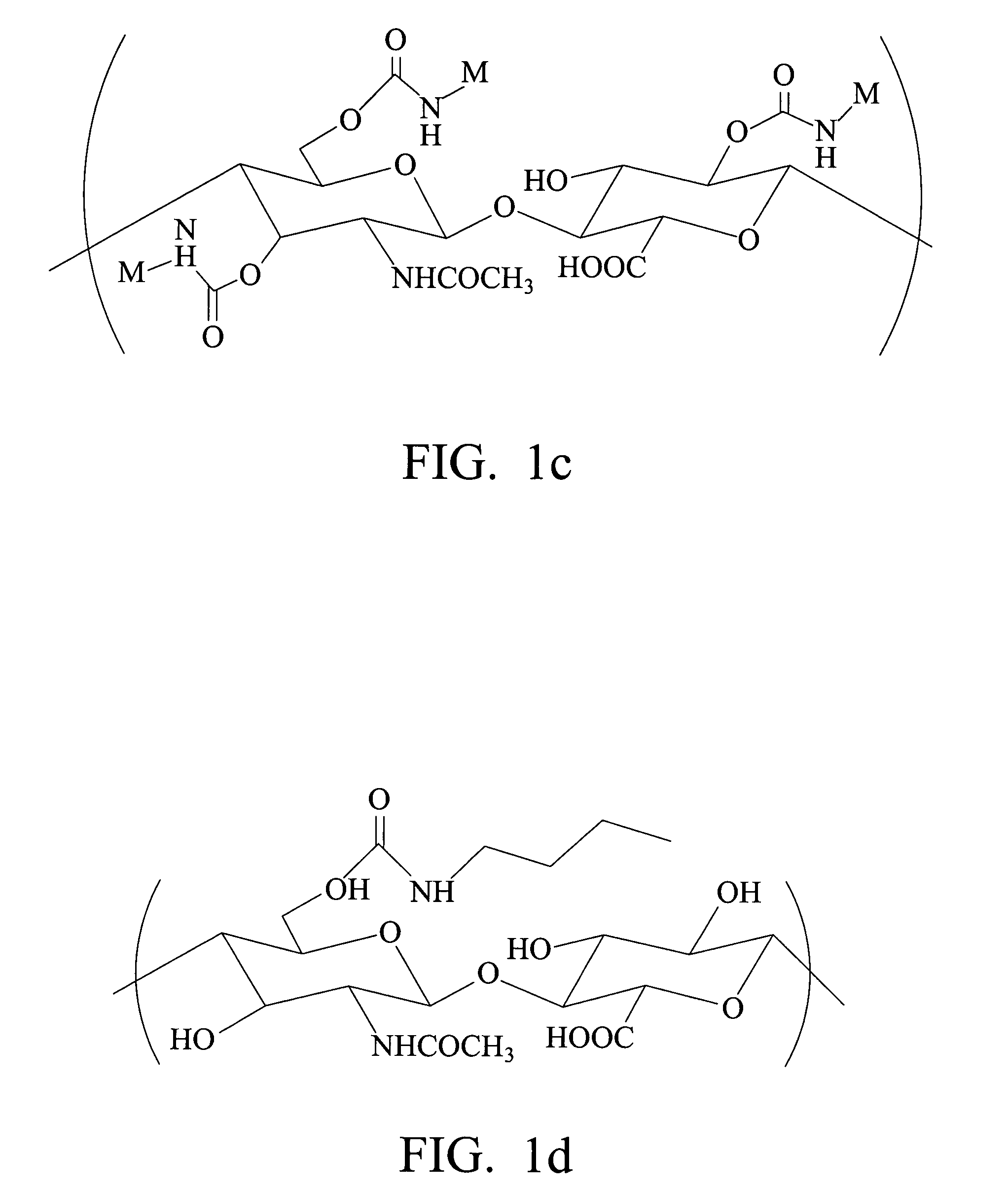Biodegradable hyaluronic acid derivative and biodegradable polymeric micelle composition
a technology of hyaluronic acid and polymer micelle, which is applied in the direction of organic active ingredients, emulsion delivery, synthetic polymeric active ingredients, etc., can solve the problems of high cost and limited application of hyaluronic acid
- Summary
- Abstract
- Description
- Claims
- Application Information
AI Technical Summary
Benefits of technology
Problems solved by technology
Method used
Image
Examples
example 1
Preparative Example 1
Preparation of Quaternary Ammonium Salt of Hyaluronic Acid
[0097]0.5 g of sodium salt of hyaluronic acid was dissolved in 400 ml of deionized water and stirred thoroughly. The solution was then eluted in a 25 cm Dowex 50×8 column in H+ form for ion exchange. The resulting solution was neutralized with 40% tetrabutylammonium hydroxide solution and then freeze-dried. Yield: 0.667 g.
example a-1
100% Substituted Butyl Urethane Derivative of Hyaluronic Acid (C4-HA)
[0098]0.30 g (3×10−3 meq, stoichiometrically 100% substituted) of quaternary ammonium salt of hyaluronic acid prepared from Preparative Example 1 was dissolved in 60 ml of DMSO (dimethylsulfoxide). 0.3 g of butyl isocyanate (3×10−3 meq) and 100 μl of di-n-butyltin dilaurate (catalyst) were added in sequence. The reaction temperature was 65° C. After 8 hours of reaction, DBA (di-butyl amine) was added to stop the reaction. The reaction mixture was dialyzed in saturated sodium chloride aqueous solution with a dialysis membrane (MWCO=12,000-14,000), purified, exchanged from quaternary ammonium salt to sodium salt, and then freeze-dried to obtain C4-HA powder. The IR spectrum is shown in FIG. 3 and the urethane bond at 1710 cm−1 can be seen.
[0099]FIG. 8 shows the chemical structure of C4-HA, in which hydrogen positions are labeled a, b, c, and d.
[0100]1H NMR of C4-HA:
[0101]4.36-2.98 (m, hyaluronic acid backbone), 1.49˜...
example a-2
100% Substituted Sec-Butyl Urethane Derivative of Hyaluronic Acid
[0105]0.30 g (3×10−3 meq, stoichiometrically 100% substituted) of quaternary ammonium salt of hyaluronic acid prepared from Preparative Example 1 was dissolved in 60 ml of DMSO. 0.3 g of sec-butyl isocyanate (3×10−3 meq) and 100 μl of di-n-butyltin dilaurate (catalyst) were added in sequence. The reaction temperature was 65° C. After 8 hours of reaction, DBA was added to stop the reaction. The reaction mixture was dialyzed in saturated sodium chloride aqueous solution with a dialysis membrane (MWCO=12,000-14,000), purified, exchanged from quaternary ammonium salt to sodium salt, and then freeze-dried.
PUM
| Property | Measurement | Unit |
|---|---|---|
| temperature | aaaaa | aaaaa |
| size | aaaaa | aaaaa |
| size | aaaaa | aaaaa |
Abstract
Description
Claims
Application Information
 Login to View More
Login to View More - R&D
- Intellectual Property
- Life Sciences
- Materials
- Tech Scout
- Unparalleled Data Quality
- Higher Quality Content
- 60% Fewer Hallucinations
Browse by: Latest US Patents, China's latest patents, Technical Efficacy Thesaurus, Application Domain, Technology Topic, Popular Technical Reports.
© 2025 PatSnap. All rights reserved.Legal|Privacy policy|Modern Slavery Act Transparency Statement|Sitemap|About US| Contact US: help@patsnap.com



